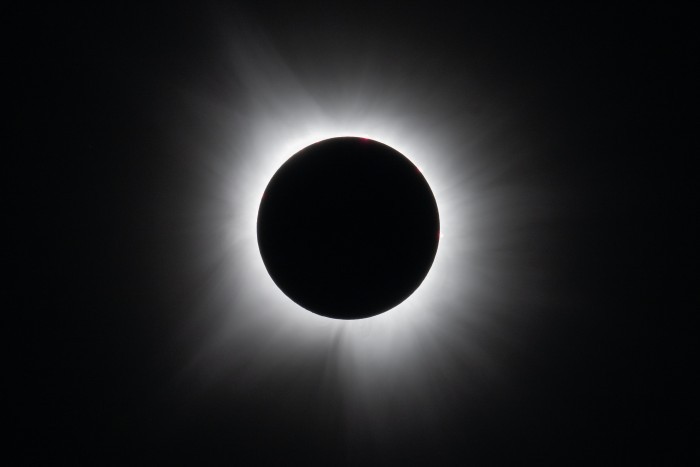
This artist's conception illustrates a storm of comets around a star near our own, called Eta Corvi. Photo: NASA/JPL-Caltech
PASADENA, CALIFORNIA (BNS): NASA's Spitzer Space Telescope has detected signs of icy bodies raining down in an alien solar system.
Spitzer has spotted a band of dust around a nearby bright star in the northern sky called Eta Corvi that strongly matches the contents of an obliterated giant comet, according to a news report by NASA.
This dust is located close enough to Eta Corvi that Earth-like worlds could exist, suggesting a collision took place between a planet and one or more comets.
The Eta Corvi system is approximately one billion years old, which researchers think is about the right age for such a hailstorm.
"We believe we have direct evidence for an ongoing Late Heavy Bombardment in the nearby star system Eta Corvi, occurring about the same time as in our solar system," Carey Lisse, senior research scientist at the Johns Hopkins University Applied Physics Laboratory in Laurel, was quoted as saying in the news report.
Astronomers used Spitzer's infrared detectors to analyze the light coming from the dust around Eta Corvi.
Spitzer detected spectral signatures of water ice, organics and rock around Eta Corvi -- key ingredients of comets. This is the first time that evidence for such a comet storm has been seen around another star.
Scientists say the Late Heavy Bombardment was triggered in our solar system by the migration of our outer planets, which jostled icy comets about, sending some of them flying inward. The incoming comets scarred our moon and pummeled our inner planets. They may have even brought materials to Earth that helped kick start life.
"We think the Eta Corvi system should be studied in detail to learn more about the rain of impacting comets and other objects that may have started life on our own planet," Lisse added.
 Previous Article
Previous Article Next Article
Next Article












The Indian Air Force, in its flight trials evaluation report submitted before the Defence Ministry l..
view articleAn insight into the Medium Multi-Role Combat Aircraft competition...
view articleSky enthusiasts can now spot the International Space Station (ISS) commanded by Indian-American astr..
view article